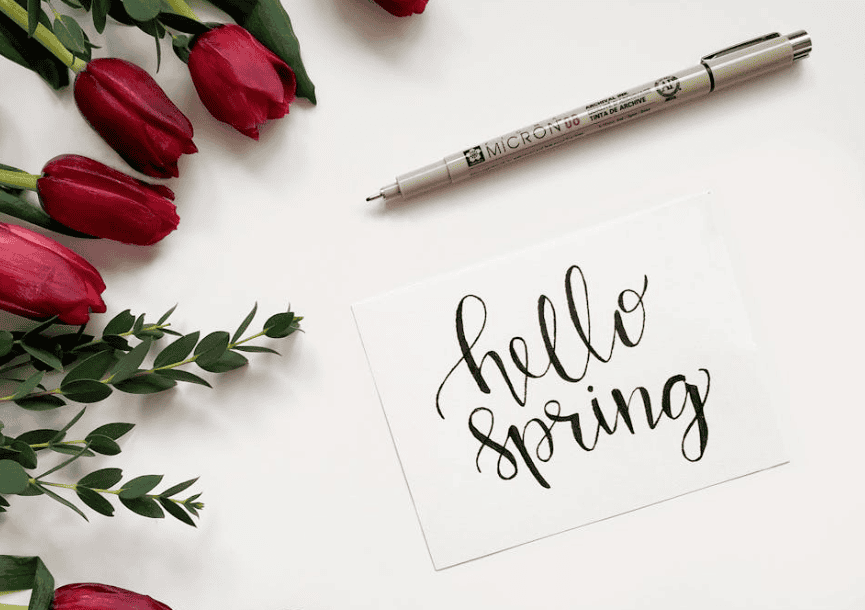Hand lettering is a form of artistic expression that blends illustration and alphabetic characters to create unique, engaging, and personalized works of art.
It’s a practice that has seen a resurgence in popularity among artists, designers, and DIY crafters alike. Its allure lies not just in the final product but in the process itself—a meditative activity that allows for personal expression while honing one’s creative skills.
This post aims to explore the art of hand lettering, providing valuable insights, ideas, and examples designed to inspire both novices and seasoned professionals in the realm of creative design.
The Foundation of Hand Lettering
Before we dive into the myriad ways you can experiment with hand lettering, it’s crucial to understand the foundation on which this art form stands. Hand lettering involves drawing letters by hand, as opposed to calligraphy, which is the art of writing with specific strokes. Unlike typography, which involves repeated characters in a specific style, hand lettering gives you the freedom to treat each letter as a separate piece of art.
Materials You’ll Need
To start your hand lettering journey, you will need a few basic supplies:
- Pencils for sketching your designs
- Erasers for correcting any lines
- Ruler for creating straight lines and maintaining proportions
- High-quality pens or markers for the final artwork
- Paper suited to your chosen mediums
Choosing the right pen or marker can significantly affect your work’s quality, so it’s worth experimenting with different types to find what best suits your style.
Creative Hand Lettering Ideas and Styles

1. Brush Pen Lettering
Brush pen lettering is a popular style that mimics traditional brush strokes, offering a dynamic range of thickness in lines. The key to mastering this style lies in controlling the pressure applied during the stroke; light pressure for thin lines and heavy pressure for thick ones.
2. Calligraphy Inspired Lettering
Drawing inspiration from calligraphy, this style focuses on creating elegant, flowing letters with a touch of timelessness. While traditionally done with a dip pen and ink, many artists now utilize modern calligraphy markers to achieve a similar effect.
3. Block Lettering
Block lettering involves creating letters with geometric shapes and lines, resulting in a more structured and uniform look. This style is particularly effective for posters, headlines, or any project where you want the letters to stand out boldly.
4. 3D Lettering
For those looking to add depth and dimension to their work, 3D lettering is an excellent option. By adding shadows and highlights to your letters, you can create the illusion of depth, making your lettering pop off the page.
5. Ornamental Lettering
This style takes hand lettering to an ornate level, incorporating decorative elements like flourishes, filigree, and other elaborate designs. It’s a fantastic way to add complexity and flair to initials or single words.
Application of Hand Lettering in Professional Projects
Hand lettering can significantly enhance various professional projects, from branding and logo design to packaging, advertising, and editorial content. Its personalized touch can help businesses and creatives establish a distinctive voice and aesthetic that sets them apart from the competition.
Tips for Practicing and Perfecting Your Hand Lettering
- Practice Regularly: Like any skill, regular practice is key to improvement. Dedicate time each day to practice different letters, styles, and compositions.
- Experiment with Styles: Don’t be afraid to try out various styles and techniques. This experimentation will help you find your unique voice in hand lettering.
- Study Other Artists: Look at the work of seasoned hand letterers for inspiration. Pay attention to how they use line weight, spacing, and composition to convey different moods and messages.
- Share Your Work: Join online communities or social media platforms where you can share your work, receive feedback, and connect with other artists. It’s a great way to learn and grow in your craft.
Hand lettering is more than just a way to create beautiful artwork—it’s a means of expression, a professional tool, and a continual learning process. Whether you’re an art enthusiast, a creative professional, or a DIY crafter, the world of hand lettering offers endless possibilities for creativity and personal growth. By exploring various styles and applying these techniques to your projects, you can unlock new levels of artistic expression and professional distinction.
